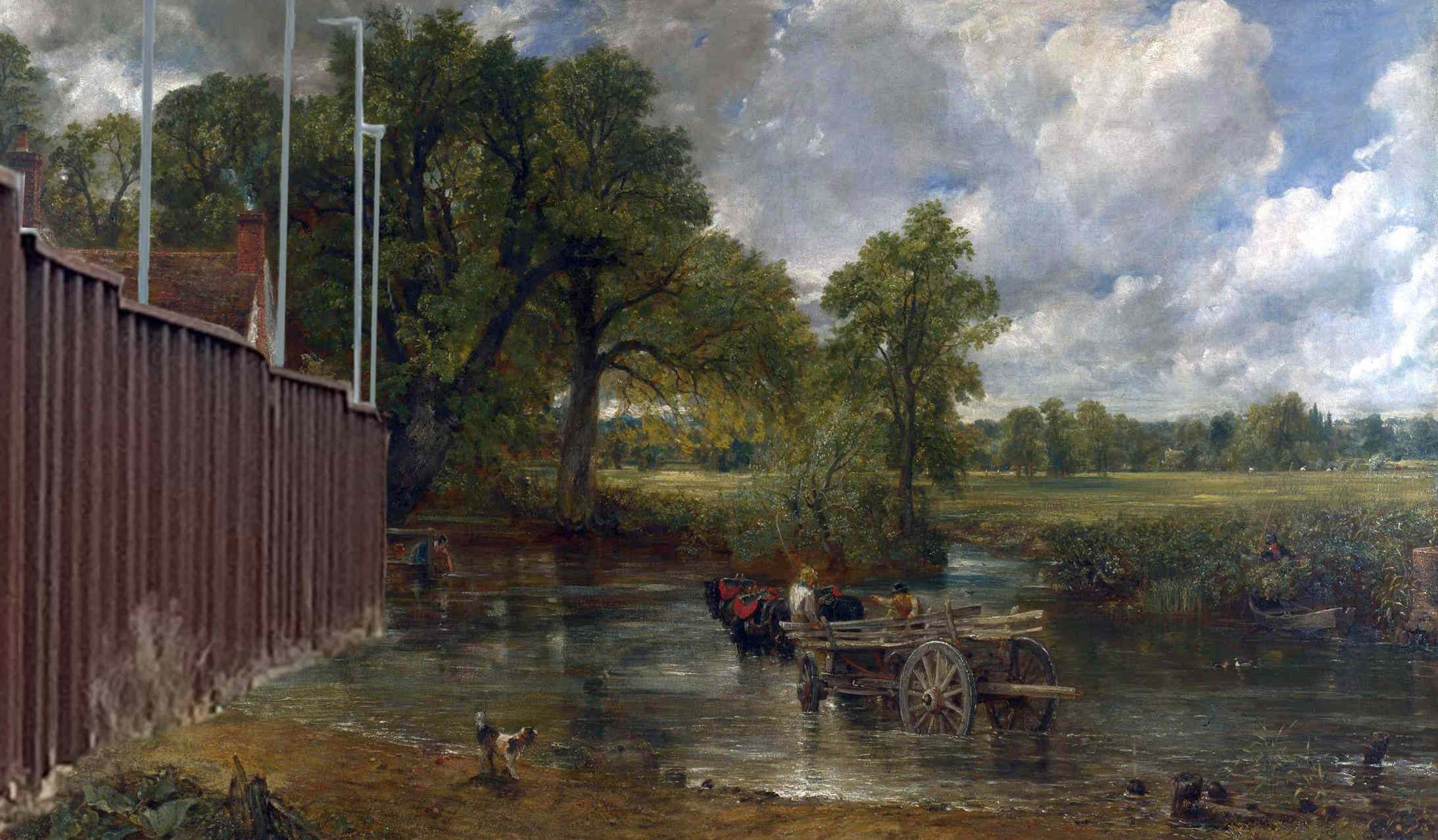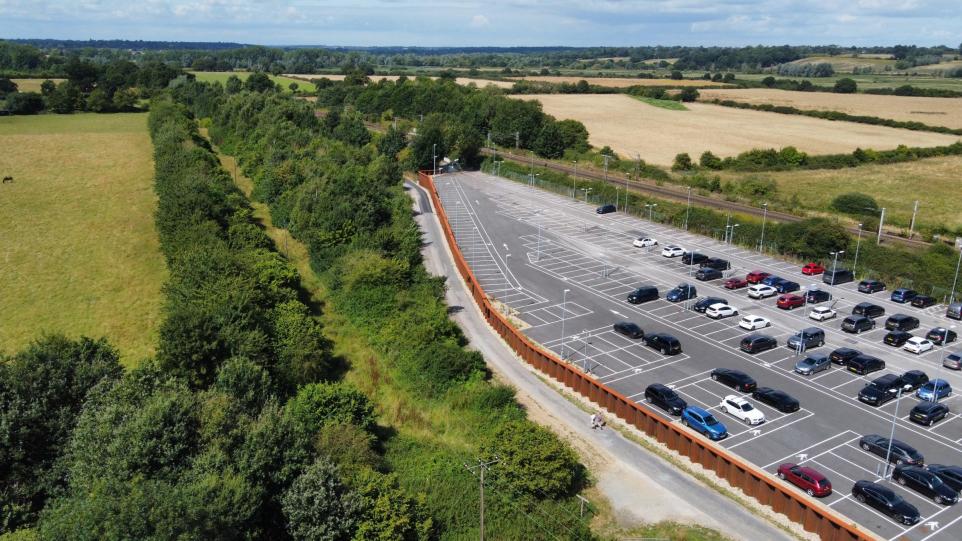|
|
|
|

Protecting the
Dedham Vale
Until five and a half years ago Manningtree station announced itself by an avenue of poplar trees. Step off the train, cross the station car park & turn right you would be at the foot of one of the most celebrated walks in natural England, starting through the poplars & heading towards the heart of the Dedham Vale. Not far along the River Stour when the scene becomes remarkably familiar you might stop. You could be standing on the very spot John Constable set up an easel to paint his world famous masterpiece 'The Hay Wain'.
The experience starts differently today. The poplars have been felled. And, to expand the car park, the adjacent sloping bank has been levelled with infill buttressed by a 190m sheet metal wall up to 4m tall. CCTV cameras watch and darkness triggers a sharp white light that can be seen from miles around. This is no gateway to Dedham Vale. This is gateway to Guantanamo Vale.
The Dedham Vale is a 'legally protected'

We are individuals from Manningtree, Essex, who, until March 2020, were privileged to enjoy the sanctuary of an 'Area of Outstanding Natural Beauty' (AONB) on our doorstep. However, while COVID ripped through the UK, a giant metal wall and car park ripped through our 'protected' sanctuary. How was this allowed to happen?
This is our attempt to explain.
We are not legal professionals but members of the public who have invested considerable time to understand elements of UK law (especially as it relates to development by train operators on their station land). This lead straight to the authored 'sleight of hand' behind the devastation brought upon Manningtree & the Dedham Vale. Do read on.
We hope that this resource will be interesting, relevant & helpful to those like us. All we ask you to do is to share it with others. Thank you.

Planning advisor to Greater Anglia, Mott MacDonald Ltd, wrote a
provide details of the development proposals and seek confirmation from Tendring District Council ('the LPA' hereafter) that an extension to the existing ground level car park is
The letter quotes the following planning law:
'Development by railway undertakers on their
Whether or not a plot is operational land (& thereby eligible for permitted development rights) is determined by the two subsections making up
The letter rehashes subsection one:
In accordance with S.263 of the TCPA, GA's operational land comprises land which is used for the purpose of carrying on their undertaking and land in which an interest is held for that purpose.
The letter omits subsection two.
Over 1,000 words later, starting to wind down, the letter reasserts that the Manningtree Station development is permitted development.
The planning authority, Tendring District Council, issued a
Greater Anglia built at Manningtree Station. It

&

Richard Buxton, planning solicitors, were
instructed by Dedham Vale Society during the construction of the car park to inform the local Council that as the development was 'schedule 2 development' under the
Tendring District Council confirmed
via a detailed
Tendring District Council issued an
Greater Anglia asked the Secretary of State for an Environmental Impact Assessment (EIA) screening opinion.
The government planning inspector decided that Manningtree Station development did not require an
Tendring District Council
Richard Buxton pointed out that, in reaching her EIA screening opinion, the government planning inspector had
(1) failed to consider significant details, and
(2) ignored the
The Dedham Vale Society applied for a
The Dedham Vale Society submitted a skeleton argument to Court. The judge determined that the government planning inspector's opinion was
(1) based on an error of law and
(2) might have been different had the
The Secretary of State acknowledged that it had made a legal error and withdrew its EIA screening opinion.
Greater Anglia asked The Secretary of State for a 2nd EIA screening opinion.
Richard Buxton, Dedham Vale Society planning solicitors, writes:
The EIA screening direction has returned to the Secretary of State.
and
A decision is awaited.
and
our clients are hopeful that the enforcement notice will be reinstated soon